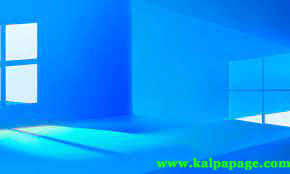Enable virtual desktops in Windows 11
Enable virtual desktops in Windows 11
Enable virtual desktops in Windows 11
Enabling virtual desktops in Windows 11 allows you to create multiple desktops on your computer, each with its own set of open windows and applications. This feature can help you stay organized and switch between different tasks more efficiently. Here’s a detailed guide on how to enable and use virtual desktops in Windows 11:
1. Open Task View: To access the virtual desktop feature, click on the “Task View” button on the Taskbar. The Task View button looks like a rectangle with two smaller rectangles stacked on top of each other.
– Alternatively, you can use the keyboard shortcut “Windows key + Tab” to open Task View.
2. Create a New Virtual Desktop: In Task View, you’ll see your current desktop at the top of the screen, with any open windows displayed below it. To create a new virtual desktop, click on the “New desktop” button in the bottom-right corner of the screen. It looks like a plus (+) symbol.
3. Switch Between Virtual Desktops: After creating multiple desktops, you can switch between them by clicking on the corresponding desktop thumbnail in Task View.
– You can also use the keyboard shortcut “Windows key + Ctrl + Left Arrow” to switch to the previous desktop or “Windows key + Ctrl + Right Arrow” to switch to the next desktop.
4. Move Windows Between Desktops: To move windows between virtual desktops, open Task View, and drag the desired window from one desktop’s thumbnail to another. The window will move to the selected desktop.
5. Close a Virtual Desktop: To close a virtual desktop, enter Task View, hover over the desktop thumbnail you want to close, and click on the “Close” button (an X symbol) that appears in the top-right corner of the thumbnail.
– Be aware that closing a virtual desktop will also close any open windows and applications on that desktop.
6. Keyboard Shortcut for Creating New Desktop: You can also use the keyboard shortcut “Windows key + Ctrl + D” to create a new virtual desktop quickly.
7. Keyboard Shortcut for Switching Desktops: Besides the keyboard shortcuts mentioned earlier, you can switch between virtual desktops using the keyboard shortcuts “Windows key + Ctrl + Left Arrow” (previous desktop) and “Windows key + Ctrl + Right Arrow” (next desktop).
Using virtual desktops can help you manage your workflow and keep different tasks organized in separate spaces. It’s an excellent feature for multitasking and can be particularly useful if you work with many open windows and applications simultaneously.
Microsoft might have made updates or changes to Windows 11 and its features since the last update of this article. For the most current and accurate information, please refer to the official Microsoft documentation or the Windows 11 settings when using the operating system. 0 0 0.
Enable virtual desktops in Windows 11

Leave a Reply